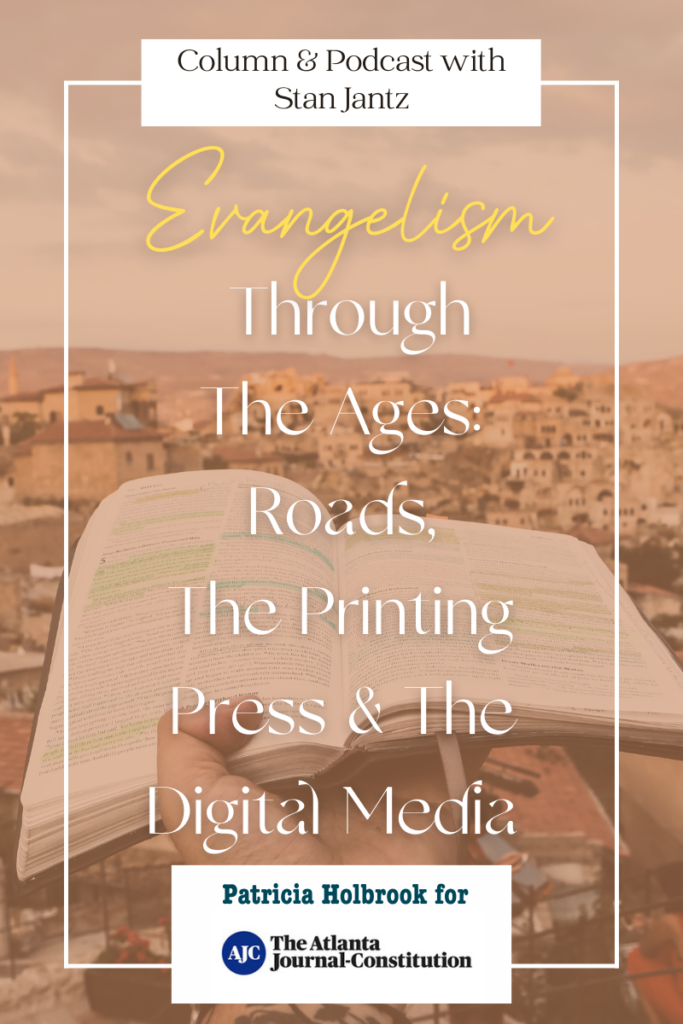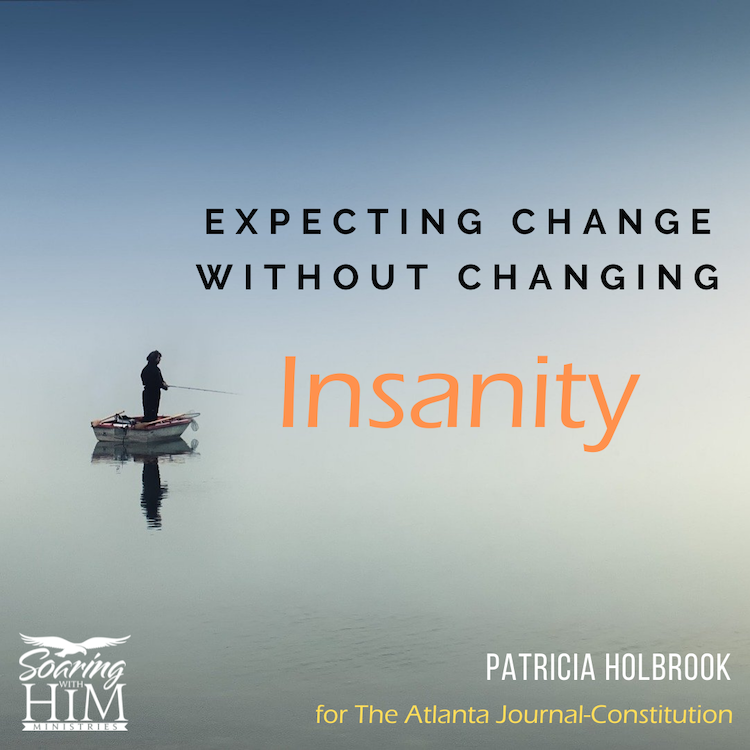Column for The Atlanta Journal-Constitution
Following the miraculous resurrection of Jesus, the bible continues the account of the next forty days, when the resurrected Christ appeared to his eleven remaining disciples and several other witnesses.
The gospels of Mark and Luke offer the most details about the time between Jesus’ resurrection and ascension. In Mark’s sixteenth chapter and Matthew’s twenty-eighth chapter, we read the Lord’s commissioning of his disciples to “go into all the world and preach the gospel to all creation.”
Following Jesus’ ascension, the book of Acts tells the story of the beginning of the church. From the arrival of the Holy Spirit in Pentecost to Paul’s mission trips, Acts of the Apostles offers a beautiful report of Christianity’s birth.
As we study the church’s history to date, one can see three significant paths that God used to carry the gospel’s message to the world through the centuries.
The first one was the Roman road system.
The Roman Road System
The Romans utilized ancient routes and established numerous new ones to build their extensive road network. Their engineers boldly aimed to connect locations in the most direct lines possible, regardless of geographical challenges or costs. These roads created a series of impressive yet functional structures that spanned over 75,000 miles from Portugal to Constantinople.
The Roman public road network significantly facilitated the movement of armies, goods, and people across the empire. Looking at a map detailing the system, it is impossible to overlook its importance in spreading the Christian religion beyond the Middle East. The first missionaries used this road system to travel far and wide, reaching previously inaccessible places.
The Printing Press
In 1440, German inventor Johannes Gutenberg created the second primary historical means of spreading the gospel: the printing press.

According to historical records, the first bible (the Gutenberg Bible) was printed in 1445 and was the first extensive book published in Western Europe. The text of this bible is the Latin translation known as the “Vulgate” (translated Common Version), and its publication marked a turning point in evangelism. God’s Word was now available to anyone who could read.
Over two millennia after the apostles received the Great Commission, believers are riding the wave of the third major historical means of spreading the gospel to the “ends of the earth:” the internet and media.
For the past couple of years, I have had the privilege to witness the incredible expansion of the gospel’s reach at lightning speed, thanks to the popularity of Christian shows and movies. Of all the ones I have reported in this column, The Chosen TV series is my personal favorite.
The Chosen
I love how the series portrays Jesus’ humanity and highlights the disciples’ lives in a unique, relatable way. As of January 2024, the show had 770 million episode views across 175 countries. This widespread viewership is a testament to the power of modern media in reaching a global audience with the gospel.
After my coverage of the season four premiere in January, I interviewed Come and See Foundation‘s CEO, Stan Jantz. Jantz was president of one of the nation’s largest Christian bookstores and is a bestselling author of 75 titles. He felt called to serve at Come and See after realizing the potential impact of The Chosen series.
Come and See’s mission is to ensure that all seven seasons of The Chosen are completed and translated into 600 languages, distribute it globally, and keep it free for all in The Chosen app. According to Jantz, the foundation is counting on its supporters to help fulfill this mission, which should take the gospel’s message to over 90% of the world.
The gospel’s journey from ancient Roman roads to modern media demonstrates how each era brought new opportunities to spread Christ’s message. Today, media projects like The Chosen connect the gospel with millions worldwide. Organizations like the Come and See Foundation ensure that the story of Jesus and his disciples remains accessible to all, transcending cultural and linguistic barriers.
Sometimes, all it takes to see God at work, even in the darkest times, is to open our spiritual eyes. In a time when the media often promotes horror, perversion, and fake news, I am encouraged to witness it being instrumental in furthering the Good News to the ends of the earth.
Sometimes, all it takes to see God at work, even in the darkest times, is to open our spiritual eyes. #Evangelism #Gospel #TheChosen @AJC Share on XThis article was originally published in Patricia’s column for The Atlanta Journal-Constitution on Saturday, June 30, 2024. Click HERE to find it on the AJC’s website.
ENTER THE DRAWING FOR A CHANCE TO WIN A COPY OF STAN’S BOOK – TEN ESSENTIALS FOR NEW CHRISTIANS (SCROLL TO THE BOTTOM OF THIS PAGE).
- Learn more about how to get involved with the Come and See Foundation: https://www.comeandseefoundation.org/
- To purchase Stan’s book, click here: https://amzn.to/45OGtsJ
- Listen to the interview below or on your preferred podcast platform: God-Sized Stories – Stan Jantz
Watch the Interview below or on YouTube: God-Sized Stories – Stan Jantz
enter the contest to win the book below:
Disclaimer: This post contains affiliate links. This means I may earn a small commission should you choose to sign up for a program or make a purchase using my link. It’s okay – I love all of these books anyway, and you will too!




